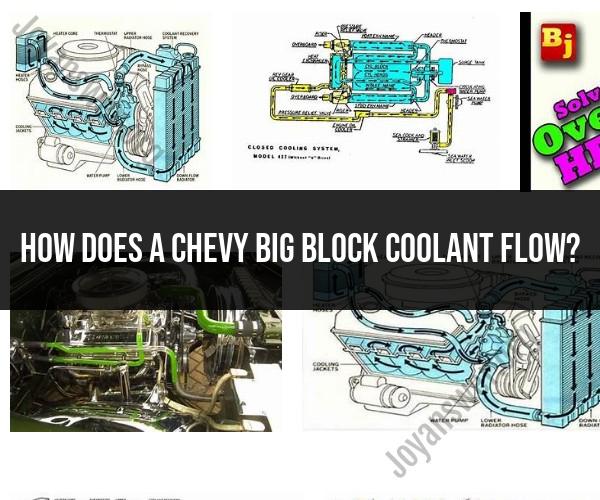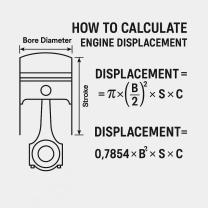How does a Chevy big block coolant flow?
The coolant flow system in a Chevrolet (Chevy) big block engine is a crucial component for maintaining the engine's temperature within the optimal operating range. Understanding how this system works is essential for the proper maintenance and cooling of the engine. Here's an overview of the coolant flow system in a Chevy big block engine:
1. Water Pump:
- The coolant flow begins with the water pump, which is typically mounted on the front of the engine and is driven by a pulley connected to the engine's crankshaft. The water pump's impeller circulates coolant through the engine.
2. Engine Block:
- Coolant flows from the water pump into the engine block, which houses the engine's cylinders, pistons, and other critical components. The coolant absorbs heat from the engine components, preventing overheating.
3. Cylinder Heads:
- From the engine block, coolant is directed into the cylinder heads. The cylinder heads contain the combustion chambers, valves, and spark plugs. Heat generated during combustion is absorbed by the coolant in the heads.
4. Thermostat:
- Located at the front of the engine near the water pump, the thermostat is a temperature-sensitive valve that regulates the flow of coolant. When the engine is cold, the thermostat remains closed, forcing coolant to circulate within the engine block and cylinder heads, allowing the engine to heat up quickly. As the engine reaches its optimal operating temperature, the thermostat gradually opens, allowing coolant to flow to the radiator.
5. Radiator:
- The radiator is a heat exchanger that dissipates the heat absorbed by the coolant. It consists of a network of tubes and fins that promote heat transfer. Air passing over the radiator's surface, often facilitated by an electric or engine-driven fan, helps cool the coolant.
6. Radiator Cap:
- The radiator cap serves as a pressure relief valve and maintains system pressure. When the coolant reaches a certain temperature and pressure, the cap allows excess coolant to flow into an overflow or recovery tank.
7. Recovery Tank:
- The recovery tank, also known as an expansion tank or overflow reservoir, stores excess coolant that expands when heated. When the engine cools down, coolant is drawn back into the system from the recovery tank to maintain proper fluid levels.
8. Water Pump (Return Flow):
- After passing through the radiator and releasing heat, the cooled coolant is drawn back into the water pump through the lower radiator hose. This initiates another cycle of coolant circulation through the engine.
In summary, the coolant flow system in a Chevy big block engine plays a critical role in regulating engine temperature. It ensures that the engine operates within a safe temperature range by absorbing heat from engine components, transferring it to the radiator for cooling, and then returning cooled coolant to the engine. Proper maintenance of this system, including regular coolant flushes and thermostat checks, is essential to prevent overheating and maintain engine efficiency.













